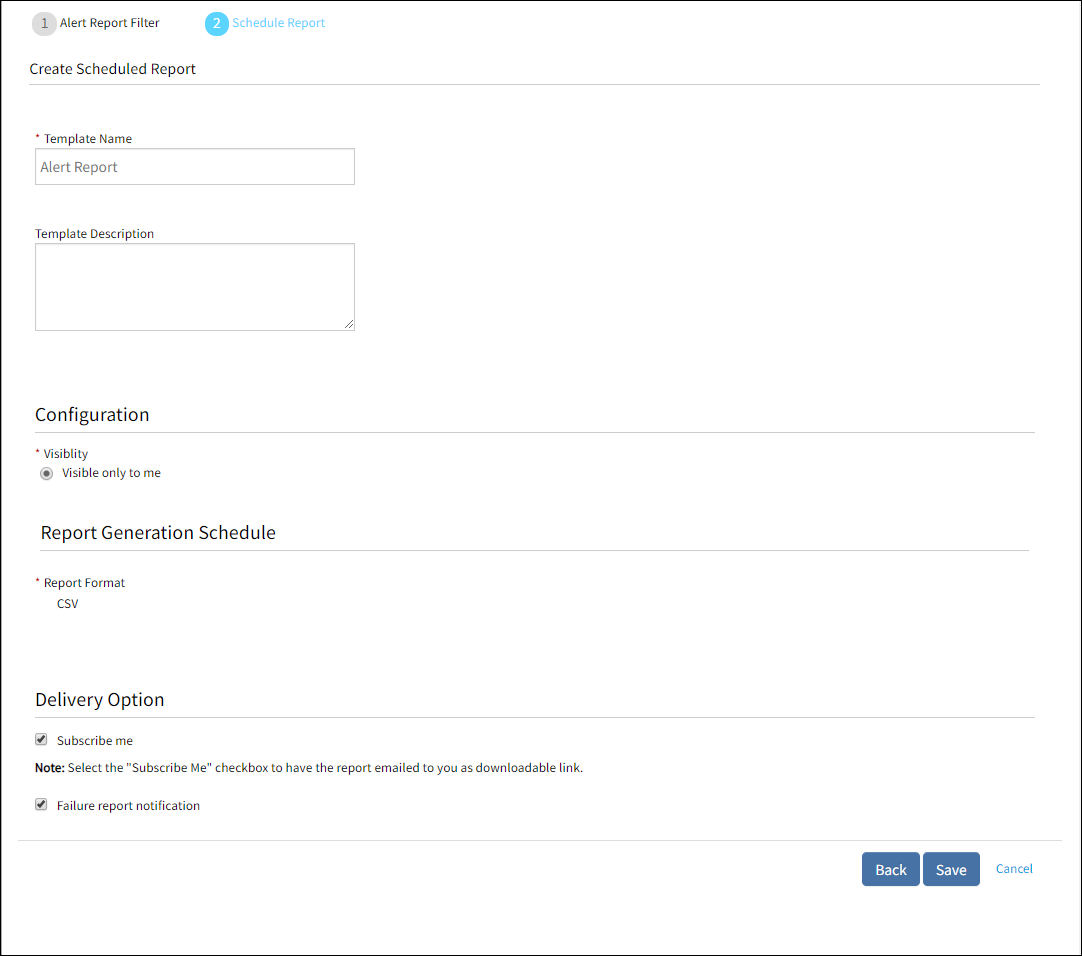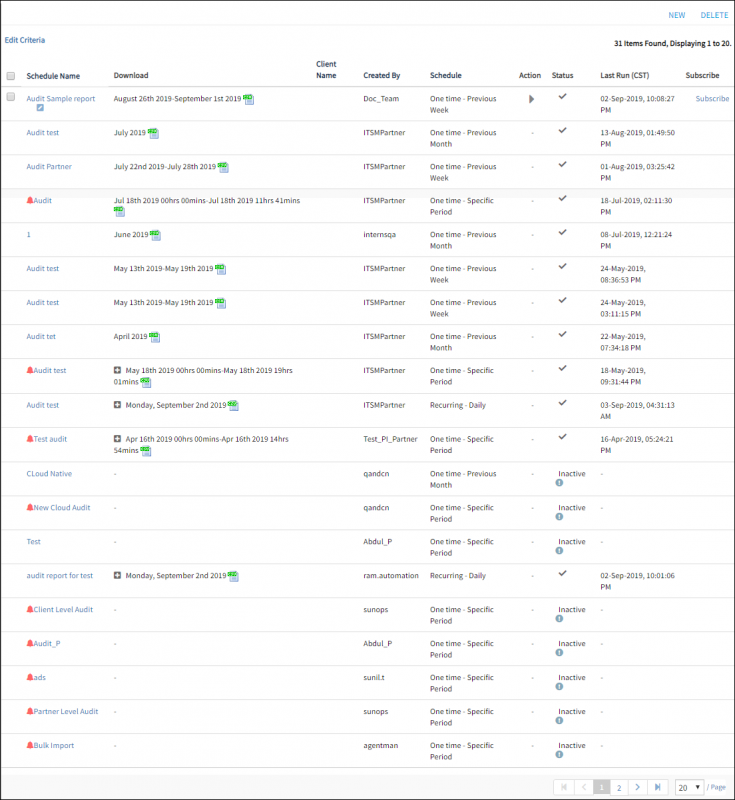Using Standard reports, you can create reports with a predefined template.
Create a standard reports
To create a standard report:
- Go to Reports > Standard.
- Select a client if the report is client-specific.
- From the NEW drop-down menu, select the type of report that you want to create.
- From the Create Scheduled Report page, enter the required information.
Choose the option Include Specific Hours to specify exact hours. This option is applicable only to monthly or weekly reporting period of Alert, Availability, and Network Statistic reports. The generated report only includes data from the selected hours on the specified days of the week. - Depending on the report type, click Save or Apply Schedule.
Note
When you select “Last Monitored Time” under the Inventory Report or “Last Response Time & Last Response Value” under the Monitor Details Report, the column values will be updated to show the timely data. The following rules were applied:
- If the device has been monitored within the last 1 month, the Last Monitored Time will be displayed.
- If the device has not been monitored for 1 month, the respective columns will be empty.
- If the device creation time is less than 1 month and it is not yet monitored, the Last Monitored Time will be empty.
Audit report example
This example create an Audit report. The Audit report provides the audit data related to managing (create/update/delete) of users, resources, service desk entities, permission sets, and credentials sets.
To create an Audit report:
- Go to Reports > Standard.
- From the NEW drop-down menu, click Audit Report.
- From the Create Scheduled Report page, enter the following details:
- Template Name
- Template Description
- For the Configuration section, select one of the following options in Visibility:
- Visible Only To Me
- Visible To Service Provider Users
- From Content Section, select the Partner and Client.
- For Report Generation Schedule, provide details for the following parameters:
- Reporting Period
- Schedule
- Report Format
- For Delivery option, select one of the following options:
- Subscribe me
- Failure report notification
- Click Save.

Alert report example
Alert reports help you to view and visually analyze a list of alerts that satisfies certain user criteria. User can choose to limit the number of alert notifications by creating relevant alert reports for non-critical alerts.

Alert reports provide a list of alerts configured by user for specific alert metrics.
Alert reports can also be configured based on resource or device details on which alerts are detected.
You can schedule the report generation as on-demand or recurring.
The following are examples of how alert reports can be used:
- To generate a list of alerts based on when the alerts were created, updated, closed or suppressed
- To generate a list of alerts of specific alert types ( Example: gateway, monitoring)
- To generate a list of alerts from specific sources. (Example: integrations)
- To generate the total number of critical alerts for the month
- To generate the count of alerts in different statuses (Example: Warning or Critical)
To configure an Alert report:
- Go to Reports > Standard.
- From the NEW drop-down menu, click Alert Report.
- From the Create Scheduled Report page, enter the required alert attributes to generate the report.
- To generate a report without creating a schedule, click Generate Report,
- To create a report schedule, click Next, enter the configuration information, and click Save.
The generated report is displayed in the Standard page.
- Click CSV icon to download report.
- Click Unsubscribe to unsubscribe from email report notifications.
View standard reports
The standard reports display the following information as displayed in the table below.

| Attribute | Description |
|---|---|
| Schedule Name | Name of the report |
| Download | To download the report in CSV format |
| Client Name | The name of the selected client |
| Created By | Author of the report |
| Schedule | The selected time frame to generate a report |
| Action | The Run Now action is available only for reports with On-Demand schedule |
| Status | Displays the status of the report. A report can appear in one of the below four states.
|
| Last Run | The time and date of the recently generated report |
| Subscribe | To get reports as a downloadable link using email |
Edit standard reports
The edit functionality in the Standard report allows you to change the existing report details.
To change a report:
- Click Reports.
- From the left pane, click Standard.
All configured Standard reports are displayed. - Click Edit icon for the report in the Schedule Name column.
The Scheduled Report page for the selected report is displayed. - Make changes to the current details as needed.
- Click Update.
Delete standard reports
You can delete any existing standard reports from the Standards reports page.
To delete a report:
- Click Reports.
- From the left pane, click Standards.
All configured standard reports are displayed. - Select a report from the list of reports.
- Click DELETE.
A confirmation message is displayed. - Click Yes to continue.